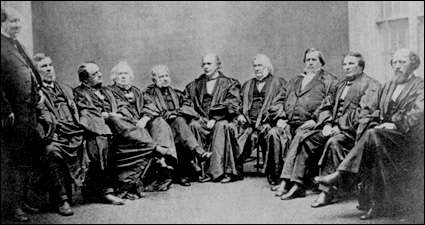On January 1, 2022, the original Winnie-the-Pooh book fell into the public domain. That means any individual or corporation can now use the bear in new books or movies without paying a licensing fee to Disney, which has controlled the copyright to the character since the 1960s.
The next day, actor Ryan Reynolds marked the occasion with a YouTube ad for his wireless company, Mint Mobile. Reynolds read from a new book called Winnie-the-Screwed, about a bear who was paying too much for wireless service. “Like anyone with a big wireless plan, Winnie-the-Screwed just wants to keep some of his sweet, sweet money,” the book said. “But his money jar gets emptier and emptier with every monthly bill.”
In the 20th century, media companies built lucrative franchises around characters like Pooh, Mickey Mouse, Batman, and Superman. In the coming years, it will become legal for anyone—from aspiring comic book authors to actors hawking wireless service—to use these legendary characters for their own purposes. Mickey Mouse will become available for public use in 2024. Superman will fall into the public domain in 2034, followed by Batman in 2035.
For those who favor looser intellectual property laws generally and shorter copyright lengths specifically, these characters’ entry into the public domain is a long-overdue victory. But it’s also a preview of coming legal headaches and complications, especially with regard to some icons of pop culture. Though the new era will be messy at the start, the ultimate result will be a richer, more vibrant culture. Not only will there be more freedom for creators, but there will be more options for readers too.
Copyright Extensions? Oh Bother.
The Constitution requires that copyrights be granted for “limited times,” and the 1790 Copyright Act guaranteed protection for up to 28 years. The idea was to offer authors a brief monopoly to reward them for their creativity, then let creative works be freely available for the public to use.
By the time A.A. Milne published the original Winnie-the-Pooh book in 1926, Congress had doubled the maximum copyright term to 56 years. If that law had remained in force, Pooh would have fallen into the public domain way back in 1982. But in a series of bills from 1962 to 1998, Congress repeatedly extended copyright protection. It was spurred on by lobbyists representing copyright holders, such as The Walt Disney Co., which held still-valuable copyrights from the 1920s.
Thanks to those repeated extensions, some books and cartoons about Pooh are still under copyright. And that means only certain aspects of the Pooh franchise are available for public use. For example, the 1928 book The House at Pooh Corner was the first to feature Tigger. So if you want to make a cartoon with both Pooh and Tigger in it, you’ll need to either get permission from Disney or wait until that book falls into the public domain in 2024. And Pooh didn’t appear in a red shirt until 1932, so someone making a modern Pooh cartoon might want to pick a different color—at least until that copyright expires in 2028.
Indeed, the modern image of Pooh owes a lot to the cartoons Disney started making in the 1960s. Those cartoons won’t start falling into the public domain until the 2060s.
“If you’re making a new Winnie the Pooh cartoon, you need to be careful to base your drawings on the original book and not on any of Disney’s additions,” says Jessica Litman, a law professor at the University of Michigan.
So for the next couple of decades at least, artists who create independent books or movies based on these famous characters will have lawyers for Disney and other copyright holders looking over their shoulders. They’ll have to familiarize themselves not only with the public domain works they’re copying, but also the still-copyrighted works they’re not allowed to copy.
Sherlock Holmes and the Case of the Expiring Copyright
Arthur Conan Doyle published the first Sherlock Holmes book, A Study in Scarlet, in 1887, so the character of Sherlock Holmes has been in the public domain since the mid-20th century. But Doyle’s last few Holmes stories were still under copyright when Congress started extending copyright in the 1960s. As a result, a few Holmes books are still under copyright today. Holmes’ slow shift into the public domain offers a preview of the sorts of thorny legal disputes that are likely to arise as more works come out of copyright.
In 2006, the author Nancy Springer began publishing a series of young adult novels about Sherlock’s teenage sister, Enola Holmes, solving mysteries while she searches for her missing mother. Enola’s older brothers Sherlock and Mycroft appear in these novels, but the series’ main character, Enola, was entirely Springer’s invention.
Because most of the original Sherlock Holmes stories were in the public domain, Springer and her publisher didn’t think they needed a license from the estate of Arthur Conan Doyle. The estate didn’t challenge the publication of the series for more than a decade. But it took a harder line once Netflix announced plans to make a movie based on Springer’s novels. In 2020, the estate sued both Springer and Netflix, arguing that both the books and the movie infringed the copyright of the later Sherlock Holmes books that were still under copyright.
It wasn’t the first such fight. Leslie S. Klinger, a writer and attorney specializing in genre fiction, asked a court to declare that his 2011 anthology of Holmes-inspired stories, A Study in Sherlock, could be published without licensing fees. An appeals court sided with Klinger, ruling in 2014 that the estate didn’t own the character of Sherlock Holmes—it only owned specific details from the 1920s stories that were still under copyright.
In the Enola Holmes case, the estate argued that Sherlock’s personality had undergone a dramatic transformation in those later stories. Doyle had lost his son and brother in World War I. This had supposedly caused him to give the late Sherlock Holmes greater empathy and more respect for women than the early Sherlock. He even had a newfound appreciation for dogs.
“The Springer novels make extensive infringing use of Conan Doyle’s transformation of Holmes from cold and critical to warm, respectful, and kind in his relationships,” the estate argued in its complaint.
The defendants retorted this was nonsense. Character traits like warmth and kindness are too generic to receive copyright protection, they argued. Moreover, the early Holmes wasn’t as coldly rational as the estate claimed.
For example, in the 1902 novel The Hound of the Baskervilles, Holmes discovers that a dead body was not who he feared it would be. Holmes’ assistant Watson reports that Holmes “uttered a cry and bent over the body. Now he was dancing and laughing and wringing my hand.” The next year, in the short story “The Solitary Cyclist,” Watson reports that Holmes “halted, and I saw him throw up his hand with a gesture of grief and despair” when he learned about the disappearance of a woman he was trying to protect.
James Grimmelmann, a law professor at Cornell University, isn’t impressed with the estate’s arguments. “If you’re taking basic character elements combined with things that are characteristics of all people, then you’re not copying from the still-protected stories,” he says.
We’ll never know for sure who would have won, because the parties settled the case later in 2020. And the final Holmes stories will fall into the public domain at the end of 2022, so everyone will be free to reuse the entirety of the canon beginning next year.
But the fight over Sherlock Holmes provides a preview of future battles over famous characters. One big concern for independent creators is that defending against lawsuits like this is expensive. The Doyle estate forced Netflix and Springer to hire lawyers to defend themselves in court. The threat of such litigation may have helped the estate convince others to pay licensing fees, even if they didn’t think the estate’s legal position was especially strong.
The Most Wonderful Thing About Tigger Trademarks
Disney doesn’t just control Pooh-related copyrights, it also holds trademarks for Pooh and his friends. In contrast to copyright, which protects creative works such as books and movies, a trademark protects the unique markings businesses use to identify their products. Unlike copyrights, trademarks do not automatically expire.
The trademark for Tigger, for example, covers a wide range of merchandise, from backpacks to bedsheets to bowling balls. So even after Disney loses the copyright for Tigger, it might not be legal for anyone else to sell Tigger-branded toothpaste.
In its legal battle with Netflix, the Doyle estate unsuccessfully tried to use trademark law to effectively obtain perpetual control over Sherlock Holmes books and movies. In addition to its copyright claims, the estate argued that Netflix had infringed the estate’s trademarks by giving the public the false impression that Enola Holmes was endorsed by the Doyle estate.
You could imagine Disney using a similar tactic to try to maintain perpetual control over Pooh: arguing that an unauthorized Pooh cartoon infringed Disney’s trademarks and misled consumers into believing the cartoon was produced by Disney.
But the courts have consistently rejected this gambit.
In 1949, Twentieth Century Fox produced a television program based on Crusade in Europe, a book about World War II by Dwight D. Eisenhower. Failure to renew the copyright caused the television program to fall into the public domain in 1977. A small video distributor called Dastar obtained copies of the program in 1995, removed the original credits, and sold the video as its own. Twentieth Century Fox sued, arguing that Dastar had violated trademark law by removing the original credits, thereby deceiving the public about the show’s origins.
The Supreme Court ruled against Twentieth Century Fox in 2003. Allowing trademark law to be used in this way would create “a species of perpetual patent and copyright,” Justice Antonin Scalia wrote. And that’s not allowed under the Constitution, which requires that copyrights and patents be granted only “for limited times.”
The same goes for famous characters like Pooh. If publishing a new Pooh book infringes Disney’s trademark, the practical result would be little different than extending Disney’s Pooh copyright in perpetuity.
So Disney’s trademarks won’t prevent people from creating new Pooh works. But they’ll have to be careful. “You need to advertise the hell out of the fact that this is based on the original” Winnie-the-Pooh book, Litman says. “You’re allowed to truthfully advertise what you’re doing, but you want to avoid anyone thinking that this is a Disney product.”
Disney will probably always maintain control over some uses of its characters. For example, Grimmelmann says, even after Steamboat Willie is in the public domain “you can’t use Mickey Mouse as a trademark on your theme park.”
But the line between these things isn’t always clear. What about a T-shirt or a lunchbox with Pooh on it? Is that a reproduction of a public domain image, and therefore legal, or an infringement of Disney’s trademark?
In the coming decades, people will have a chance to re-imagine characters like Pooh and Batman for new generations, just as people have long created new adaptations of William Shakespeare plays and Jane Austen novels. But the repeated extension of copyright means that the process is taking a lot longer than in the past.
If we still had 56-year copyright terms, millennials would have grown up in a world where Mickey Mouse and Pooh were already free from copyright restrictions. Instead of one authorized Batman movie every couple of years, studios would be competing to produce the best Batman movies. We’d be able to look forward to independent Star Trek films in 2023 and unauthorized Star Wars films in 2034. This would be a win not just for writers, but also for audiences, who would have access to a broad range of new works that aren’t controlled by their current owners.
Instead, corporate-owned copyrights last 95 years. If a book or movie is published in your lifetime, you’ll very likely be dead before its copyright expires.
The post Why Ryan Reynolds Can Use Winnie-the-Pooh To Sell You a Phone Plan appeared first on Reason.com.
from Latest https://ift.tt/u9Ywx5I
via IFTTT









